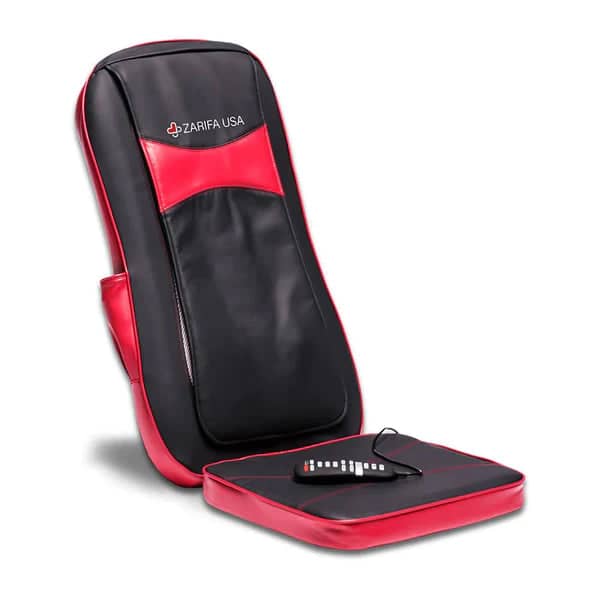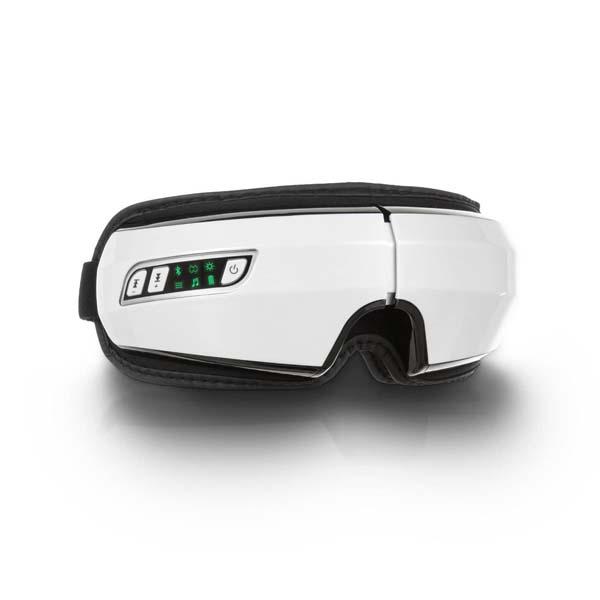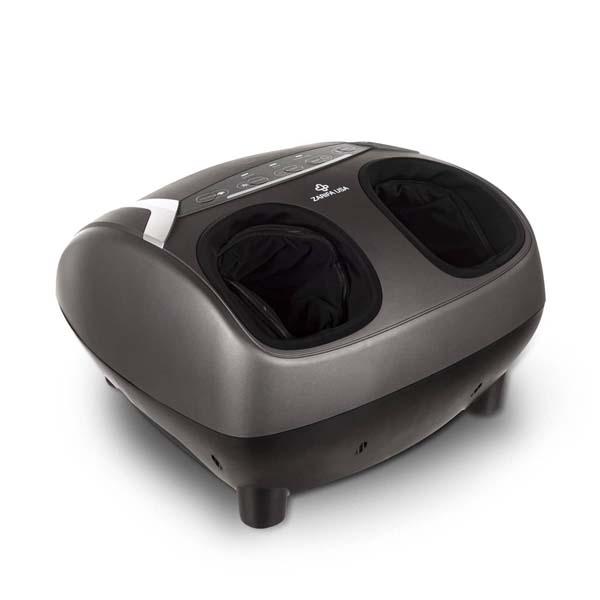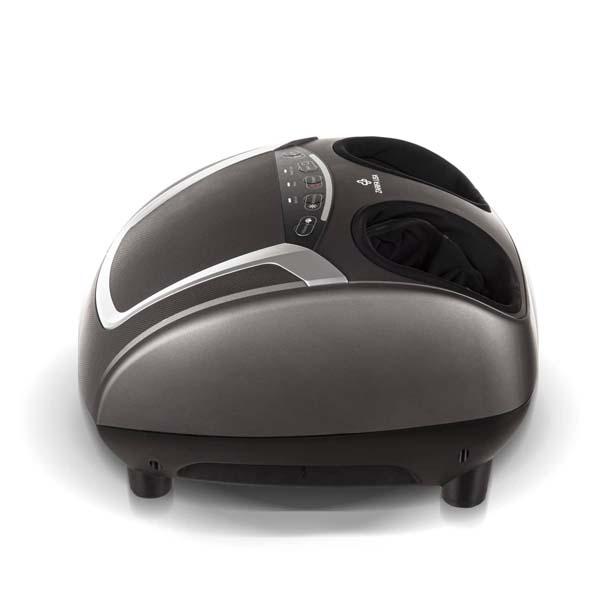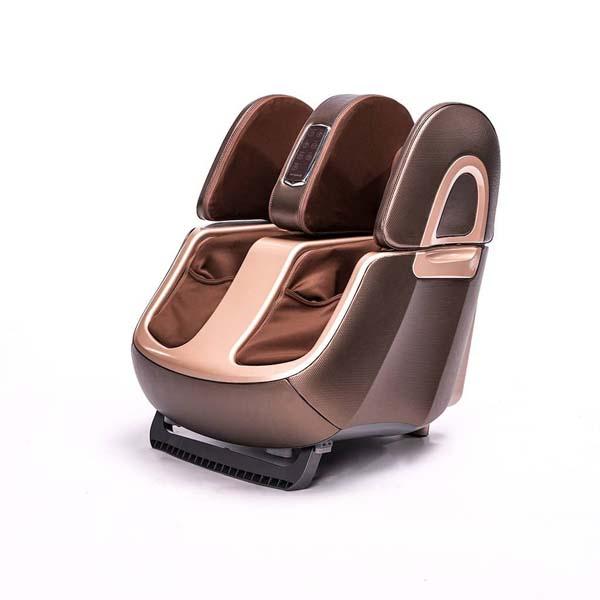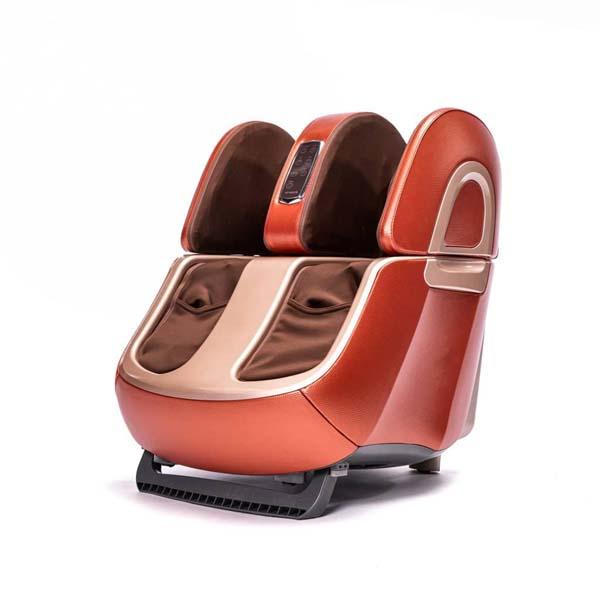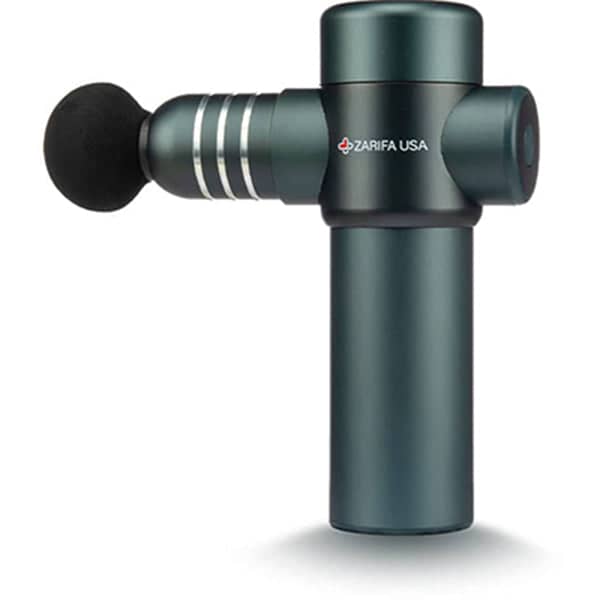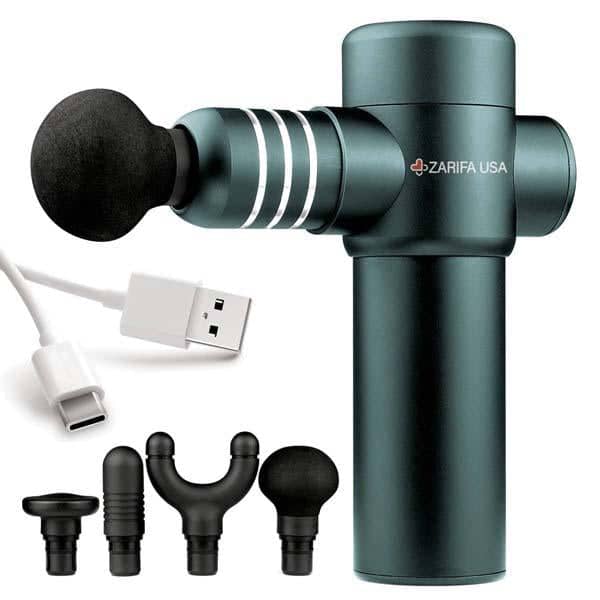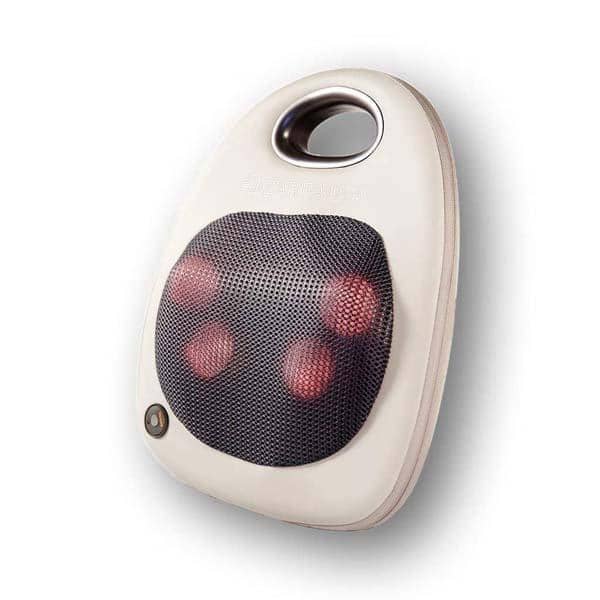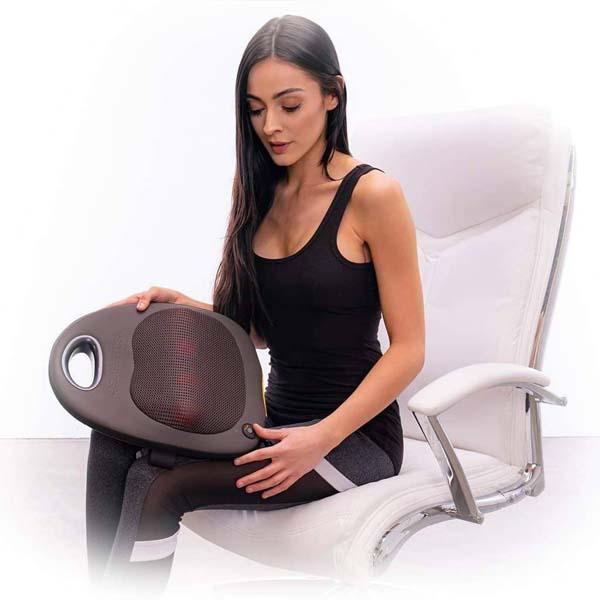The onset of the global pandemic has sent millions of people to work from home. During the honeymooning phase, all was perfect in cotton land…until, working in your pajamas was no longer fun and the kids screaming in the background during an important client meeting did not fare well for the work team either. After the significant shutdowns were over, people slowly made their way back to the office. However, so many people are doing more of a hybrid of workspaces. Now what? We need to learn how to take care of our body best, even when working from home, to manage both chronic and acute pain effectively.
How Can I Prevent Neck Pain from Poor Posture While Working at Home?
Proper Ergonomics: Proper ergonomics are essential to prevent poor posture and subsequent neck pain. Feet should be firm on the floor. The lower back should be supported. If one sits back in their chair and uses the backrest, the shoulders should be relaxed, with arms by the side and not in a reaching forward position. Whenever possible, raise the screen up to eye level to prevent slouching and chronic upper back pain.
Regular Breaks: Do not stay in one position for any longer than forty-five minutes. Get up, stretch, and move around. Take many breaks during the day for at least fifteen to thirty minutes each to exercise. Do some jumping jacks, push-ups, or sit-ups to improve circulation.
Core Strengthening Exercises: Additionally, there is a multitude of simple exercises to do at home or at work that will strengthen the core, support the lower back as well as the spine. Short, thirty-second “microbreaks” to change posture briefly by standing up or arching the back a few times while seated also can help take the pressure off. Working in a standing position for a couple of hours each day is also good practice.
Use a Massager: Keep a massager nearby to loosen tight muscles. There are many types of massagers such as mini massage guns if you are on the go, neck massagers, foot massagers, and full-body massage chairs to reward yourself and relieve the stress at home.
How to Manage Neck and Chronic Low Back Pain from Working at Home
Benefits and Drawbacks: While there are many benefits of working from home (lunch from your own fridge as well as more time with your children, depending on who you are talking to), working from home can also lead to horrible neck and back pain.
Creating a Permanent Yet Comfortable Workspace: While it seems nice to work on the couch or in the bed, these positions will cause strain on the neck and often cause a person to hunch forward, leading to neck and back pain. Leaders in this space are investing in comfortable chairs and desk spaces to recreate the office environment at home, not only helping with neck and back pain but also significantly improving productivity!
Taking Breaks to Stretch: Working long hours in front of a screen, the neck muscles will often become painfully tense. Stretching legs or walking around the house can help alleviate pain if done often throughout the workday.
Try Working Standing Up: No need to buy a fancy adjustable expensive desk, just create a makeshift standing desk to work from a kitchen countertop. Spending only a few minutes every hour standing instead of sitting the whole time in one position will relieve some of the neck and back pain.
Utilize Basic Movements: In utilizing these basic movements, it could certainly relieve neck pain. Massage chairs are also a great way to relieve neck and back pain from working at home.
Stress and Pain: “The stress from juggling life at home can also increase pain from ramped-up cortisol, tightness in muscles, shallow breathing, and decreased circulation throughout the body,” said one woman. “It’s been a perfect storm of factors (COVID-19) that has contributed to increased back and neck pain.” Stress can also lead to tightness in the soft tissues, contributing to neck and back pain.
How to Set Up an Ergonomic Home Office
In setting up an office that will help improve back and neck pain or even eliminate it, experts encourage folks to remember the “3 Ps:”
Posture: To reiterate again and to drive this point home…Proper posture is essential to prevent chronic back pain and will help take stress off the neck and elbows. When people are sitting in a prolonged position, this forces the spine’s natural ‘S’ curve to reshape into a ‘C’ curve. Obviously, this would put much more stress on the muscles, ligaments, discs, and tissues.
Proper Body Positioning: Use the following tips to help better position the body properly in a chair:
-
Ears over shoulder (not in front of your shoulders).
-
Elbows by the sides with wrists comfortably resting on a round or soft surface.
-
Support the back with the chair by using a small lumbar pillow or towel roll.
-
Feet sitting on a flat surface. If they do not reach the floor comfortably, use a footrest, stack of books, or stacks of paper.
Put it Close: The most important step, according to many, is to adjust the seat height so the eyes are lined up three inches below the top of the computer screen if using a desktop computer. Or, try tilting the laptop screen back to 120 degrees, just off vertical.
Screen and Keyboard Alignment:
-
Screen should be no more than an arm’s length away.
-
Keyboard and screen should be kept directly in front of you with the mouse to the side of your keyboard. Move your mouse back if it gets away from you during use.
-
If you’re working from a laptop, you may also want to consider purchasing a freestanding keyboard. This will allow you to raise your screen to the proper height without elevating your arms in order to type.
Positional Changes: Avoid staying stationary when you’re working. Instead, try to get up every 45-50 minutes, even if it’s just to walk around the room. “We have 360 joints in our body that need to move to stay healthy. Our body needs to move in order to circulate blood through the body. This significantly helps reduce pain and stiffness,” says Julie.
Quick and Simple Movements During Stretch Breaks:
-
Three big shoulder circles moving shoulders backward.
-
Three neck rolls from neck to shoulder; roll forward along the chest to the other shoulder.
-
Two large breaths to fill your lungs and then blowing air forcefully out.
-
Five squats in front of the desk chair.
Exercises for a Stronger Back
Just as in any other part of the body, exercise will help strengthen and support the back. It has also been suggested by pain specialists, that a scheduled walk, every day for thirty minutes a day, will do so much to strengthen the lower back and the muscles that support the spine. Exercise can also help manage chronic low back pain, which can result from various factors such as mechanical or structural problems with the spine, inflammatory conditions, and other medical conditions.
Other Great Exercises for Your Back Include:
-
Bridges: Targeting many different areas, including the buttock muscles and hamstrings. It strengthens the core, which plays a major role in supporting the lower back and the spine.
-
Clamshells: It may sound and look a little funny while doing them, however, clamshells are another great exercise to strengthen the hips and stabilize the pelvic muscles.
-
Bird Dogs: The core plays an important role in stabilizing the muscles, tendons, and tissues in the lower back. A bird dog is another great exercise to target these ab muscles.
-
Physical therapy exercises can also be beneficial for strengthening the back, using techniques such as heat, ice, ultrasound, and electrical stimulation, as well as exercises and posture improvement under the guidance of a physical therapist.
The Importance of Stretching: The importance of stretching is exceptionally imperative to have a regular routine of stretches that will help improve flexibility and mobility. Whatever approach you take, make exercise a priority. There are many great and effective home workouts that you can do with basic household items, like a towel or soup can.
Seeking Professional Help
These are just a few simple steps you can take to help relieve back pain. If you are struggling with acute back pain, consider talking to a specialist. Julie and her colleagues are available for telehealth visits to help assess your office set-up and make recommendations that can help you feel better.
Find a Doctor: If you are suffering from back pain as a direct result of working at home, talk to your primary care provider. They will be able to diagnose your pain and, if necessary, most likely refer you to a physical therapist, massage therapist, chiropractor, acupuncturist, or some other specialist to help improve the body’s much-needed mobility. A specialist can also help diagnose and treat chronic low back pain.
Using Massage Therapy for Back and Neck Pain
Massage Benefits: Regular massage therapy using basic massage techniques can significantly reduce neck and back pain, especially for those who spend long hours working from home. A professional massage therapist can target specific areas of tension, providing relief and promoting relaxation.
At-Home Massage Tools: If visiting a massage therapist is not an option, there are several at-home massage tools available that can help relieve pain and improve blood flow. Handheld massagers, foam rollers, and massage pillows can help alleviate muscle soreness and improve blood flow. Consider investing in these tools to complement your home office setup.
Importance of Hydration and Nutrition
Stay Hydrated: Drinking plenty of water is essential for maintaining muscle health and preventing cramps. Dehydration can lead to muscle stiffness and exacerbate pain, so keep a water bottle at your desk and sip regularly throughout the day.
Balanced Diet: Eating a balanced diet rich in anti-inflammatory foods can also help reduce muscle pain. Incorporate foods like leafy greens, berries, nuts, and fatty fish into your meals to support overall health and reduce inflammation.
Mental Health and Stress Management
Mindfulness Practices: Working from home can increase stress levels, which in turn can lead to muscle tension and pain. Incorporating mindfulness practices such as meditation, deep breathing exercises, or yoga into your daily routine can help manage stress and improve mental well-being.
Work-Life Balance: Maintaining a healthy work-life balance is crucial. Set clear boundaries between work and personal time, and make sure to take breaks and engage in activities that bring you joy and relaxation.
By implementing these strategies and making mindful adjustments to your daily routine, you can significantly reduce neck and back pain associated with working from home. Prioritize your health and well-being to ensure a productive and pain-free work environment.


